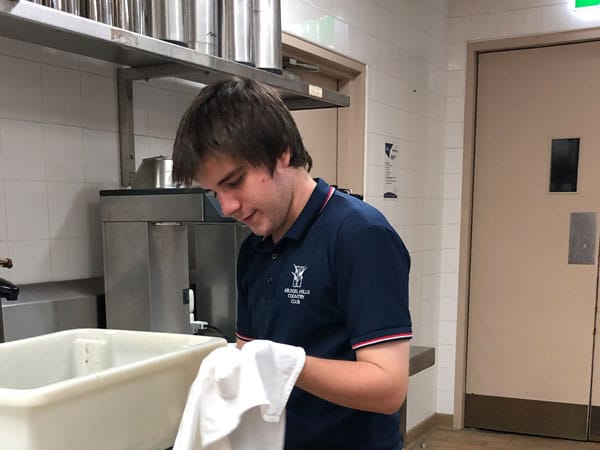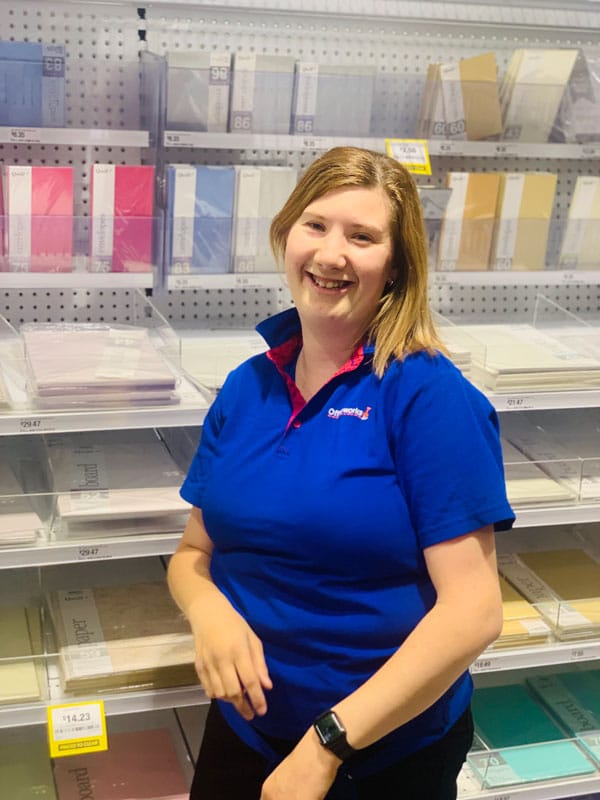1. Providing training videos with closed captions
One of the most practical ways to offer support for people with hearing challenges is to provide closed captioned videos for any form of information that needs to be shared. This is especially handy in the process of training and induction. For such material, it is critical that the standard of captioning is high in order to avoid miscommunication or misrepresentation of the message it contains.
Captioned content is extremely useful because it provides accessibility to information that would have otherwise not been available to Deaf or Hard of Hearing employees. The visualisation of the captions themselves is also beneficial to all staff as it helps them to retain information and reinforces key messages.
2. Workplace set-up
Critically, the general set-up of the workplace should also be such that it makes accommodations for those who need extra support in their work. It is important to think about various forms of inclusive technology that would help to remove any barriers.
A good example of this would be the provision of a textphone, if necessary. Text phones are special types of phones, normally attached to a keyboard and a screen, that display messages that have been either sent or received.
Other kinds of technology that might be helpful include voice recognition software, as well as augmentative/alternative devices. These are tools that enable people to communicate by typing a message that is then translated into sign language or simulated into a voice.
In addition, a quiet space that has minimal background noise and a desk location where the employee is able to see around the room should make it easier for them to communicate effectively.
It might also be beneficial to consider whether reallocating one or more of an employee’s job functions would be possible, otherwise known as ‘job carving’. If a role requires the employee to attend busy and noisy networking events, for example, the HR team could consider assigning this duty to a more suitable employee in exchange for a different responsibility.
3. Colleague communication and etiquette
Any form of company communication should always be made available in writing. This standardises channels of information flow and eliminates the possibility of a lack of inclusivity.
Right from the interview and hiring stages, companies should look to establish the potential employee’s preferred method of communication. This should then be relayed to the rest of the colleagues, alongside any other necessary information on proper etiquette so that they know how to interact with them, thereby creating an inclusive environment.
4. Organising meetings
In the case of a company or departmental meetings, it is important to think through the set-up in light of the needs of Deaf or Hard of Hearing workers. Some of the critical things here include ensuring that these employees are provided with good visual access and proper lighting. In case there is one main speaker for the particular meeting, it helps if staff members with hearing difficulties are given space in a direct line of sight to the person speaking.
It’s also imperative to think about the state of the acoustics in the room where the meeting is being hosted. Good transmission of sound is important to ensure that hard of hearing employees can also pick up what is being said.
Live captioning makes meetings, conference calls and training sessions accessible to people who are Deaf or Hard of Hearing. Access to Work Government funding is available for these types of communication support which can be put in place quickly and easily.
5. Visual emergency notifications
Beyond the value that companies can gain from Deaf or Hard of Hearing employees, it is also important to think about having measures in place that can help them during emergencies. In case of fires or any other emergency situations, it helps to have additional warning signs. These could include flashing lights, visual signs and vibrating alarms to accompany any audible alarms.
A buddy system would also come in handy when there needs to be an emergency response. Pairing Deaf or Hard of Hearing workers with other staff members helps to ensure that everyone is accounted for during emergency situations.
Creating this kind of an accommodating environment should help provide better access to work for more Deaf and Hard of Hearing employees. It should also aid them in maximising their potential and help the company or organisation to reap the full benefit of their skills and effort.
Other Additional Resources:
Source: https://blog.ai-media.tv/blog/5-things-hr-staff-can-do-to-support-deaf-employees






























